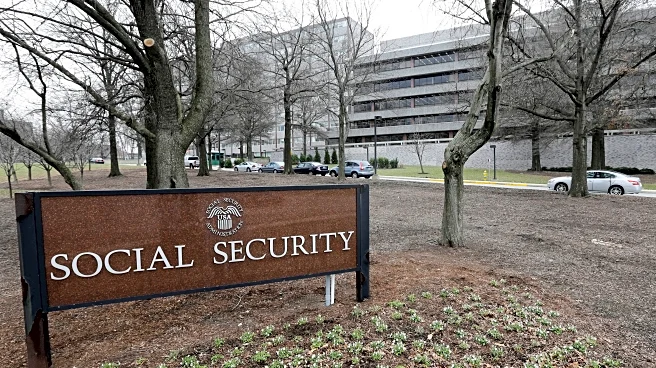What's Happening?
Retired federal workers are set to receive a slight increase in their pension payments next year, with the Social Security Administration announcing a 2.8% cost-of-living adjustment for beneficiaries.
This adjustment is based on the annual change in the third quarter consumer price index for workers. However, those enrolled in the Federal Employees Retirement System (FERS) will only see a 2.0% increase due to the system's calculation method, which has been a point of contention among federal employee groups. The National Active and Retired Federal Employees Association has expressed concern over the reduced adjustment, especially as health care premiums through the Federal Employees Health Benefits Program are expected to rise by over 10% next year.
Why It's Important?
The static cost-of-living adjustments for FERS retirees, coupled with rising health care premiums, could significantly impact the financial well-being of federal retirees. With inflation above 2%, the capped COLAs reduce the real value of annuities, affecting retirees' purchasing power. This situation highlights ongoing debates about the fairness of the bifurcated COLA process and the need for legislative action, such as the Equal COLA Act, to standardize annuity increases for all federal retirees. The financial strain on retirees may also influence broader discussions on retirement benefits and health care costs within the federal workforce.
What's Next?
The introduction of the Equal COLA Act by Rep. James Walkinshaw aims to address the disparity in annuity increases between CSRS and FERS retirees. As health care premiums continue to rise, federal employee groups and lawmakers may push for reforms to ensure retirees receive adequate compensation to cover increased living expenses. The ongoing debate may lead to further legislative proposals and discussions on retirement benefits and health care costs, potentially impacting future policy decisions.
Beyond the Headlines
The disparity in cost-of-living adjustments raises ethical questions about the treatment of federal retirees and the adequacy of retirement benefits. The financial challenges faced by retirees could lead to increased advocacy for policy changes and highlight the need for a more equitable system. Additionally, the rising health care premiums may prompt discussions on the sustainability of the Federal Employees Health Benefits Program and its impact on retirees' financial security.













